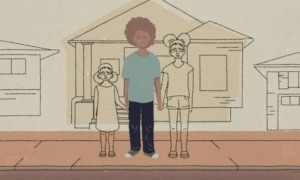SEATTLE — From 2016 through 2022, Washington saw a 40% reduction in the count of homeless young adults and homeless minors, living without their parents or guardians, according to a new report from the state’s Office of Homeless Youth and the nonprofit organization A Way Home Washington.
Based on interviews with roughly 100 young people who’ve experienced homelessness, homelessness service providers and others, “‘Yes to Yes’ Washington State: Unaccompanied Youth and Young Adult Homelessness Landscape Scan” also concluded that:
- 75% of youth and young adults who found housing in 2020 were still stably housed two years later.
- 15,338 young adults and minors accessed the state’s homelessness system in 2022.
- 50% of those who accessed the homelessness system in 2022 were Black, Indigenous or from some other non-white racial group
- An estimated one in 10 of those young adults and minors reportedly were LGBTQ, though, researchers wrote that that likely is an undercount.
- More than one-third of those experiencing homelessness were people with disabilities.
- More than one in 10 were pregnant or parenting.
The report shows that while youth homelessness is an urgent crisis, it is a solvable problem. Since the state assembled a broad coalition of community leaders and youth with lived experience in 2016 to develop an integrated, consistent statewide approach, much has been learned about promising solutions. By putting young people at the center, focusing on prevention, collecting better data, investing in creative solutions such as cash assistance, working with schools, and intervening earlier to meet young people’s and families’ needs, positive progress is being made. Likewise, the state has seen significant strides in disrupting the pipeline of youth exiting the foster care, behavioral health, and juvenile justice systems into homelessness over the past four years.
Recognizing the work to address the problem of homeless young adults and unaccompanied homeless minors is far from done, the report is transparent about persistent challenges and gaps—especially in rural communities—where these youth continue to struggle to find safe housing and shelter, particularly youth under 18 years old, LGBTQ… , BIPOC, and pregnant/parenting young people. The report delves into the authentic experiences of affected young people and reveals a narrative often overshadowed by numbers alone.
“Investments in stabilizing [youth] exiting public systems of care, the establishment of sophisticated data systems, and the strategic deployment of flexible funds showcase the state’s holistic approach to addressing the issue,” said Kim Justice, the Office of Homeless Youth’s executive director.
“The results are clear,” said Tricia Raikes, co-founder of the Raikes Foundation, which co-funded the report with the Schultz Family Foundation. “Sustained and focused efforts by state and federal agencies, alongside targeted investments and proactive public-private partnerships, have significantly reduced the number of youth and young adults experiencing homelessness.”
The report’s authors say their findings aim to help draw a roadmap for how public-private partnerships might provide young people with housing and related support services within their home communities.
Said Elisha Pritchett, A Way Home Washington’s data and evaluation director: “This report … challenges us to be thoughtful stewards of this data, listen to the voices and recommendations of young people with lived experience, and remain steadfastly committed to our collective efforts to end youth and young adult homelessness.”
![]()
Recent stories covering Washington’s homeless youth
2023
- Podcast S2E3: ‘Home was never a place’: One woman’s life in WA foster care
- Podcast S2E2: Researchers team up with court staff to help Washington homeless youth
- Podcast S2E1: Washington’s new youth homelessness ‘Lifeline’ service lags
- Homeless LGBTQ youth risk discrimination and harassment when seeking help
- Washington’s $5M youth homelessness effort is ramping up. Is it working?
2022
- Podcast S1E2: Youth leaving foster care, juvenile and other systems are aim of Washington housing effort
- Podcast S1E1: Upended by COVID-19, some nonprofits went online, on the road and otherwise innovated to aid homeless youth
































